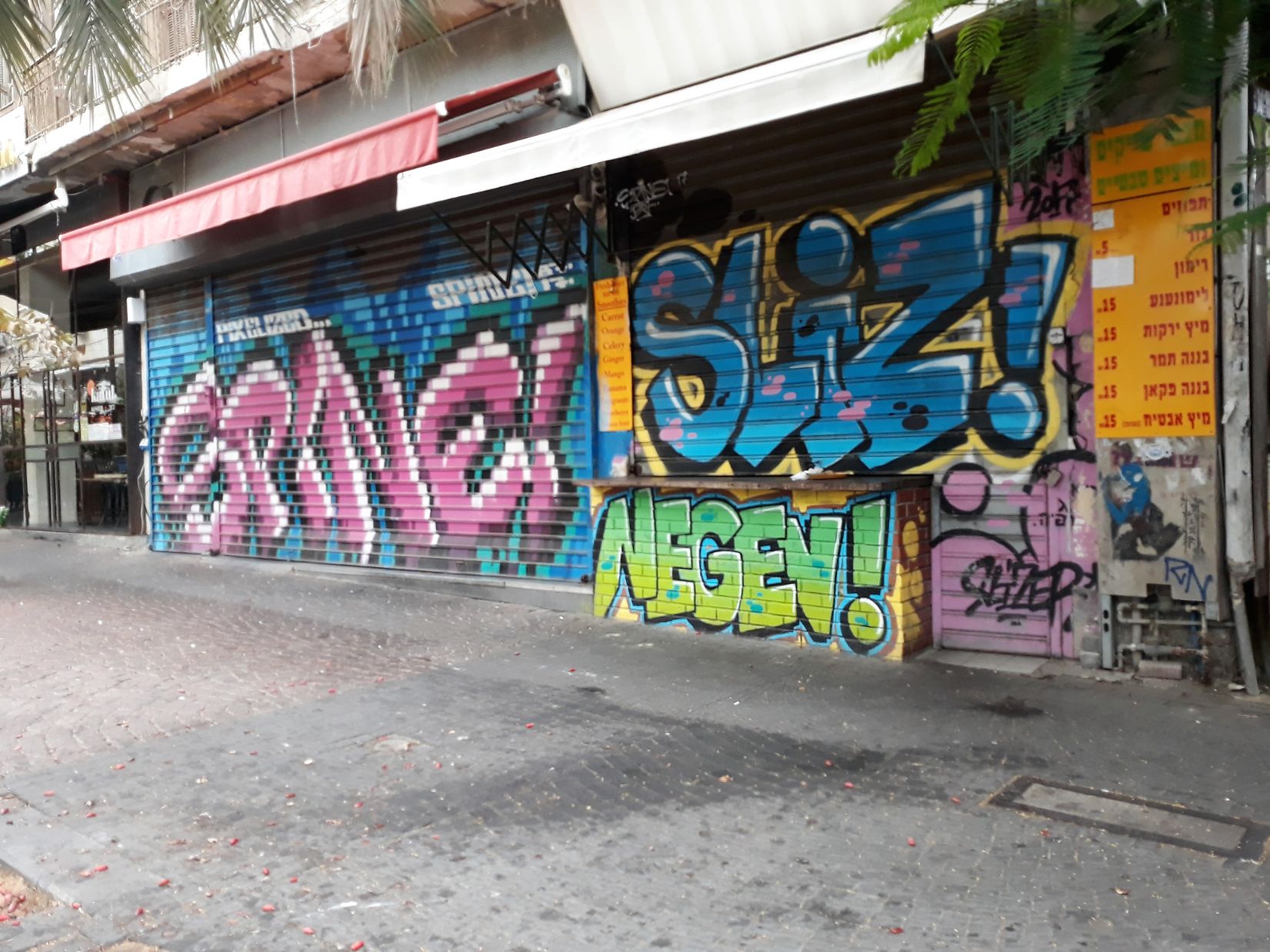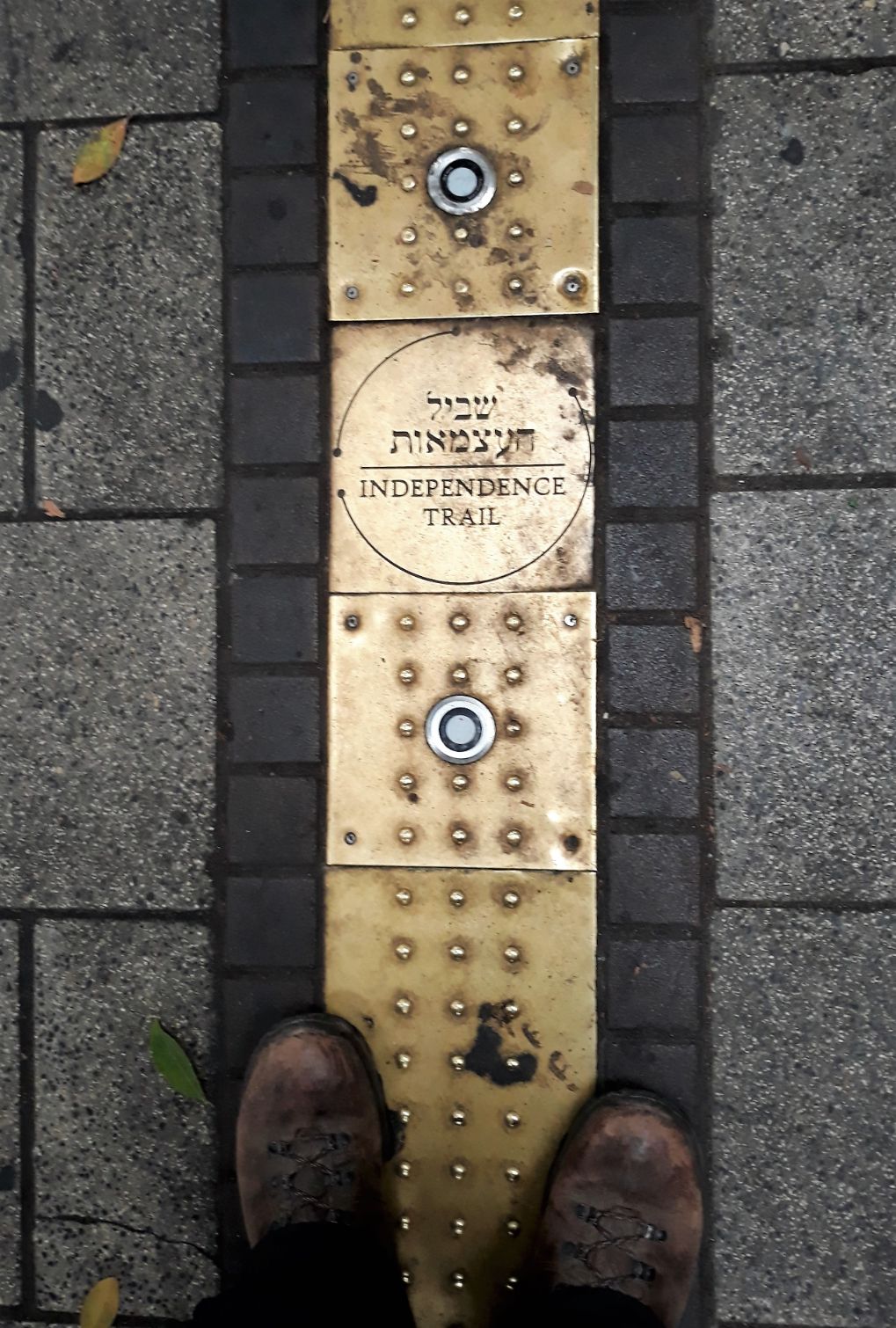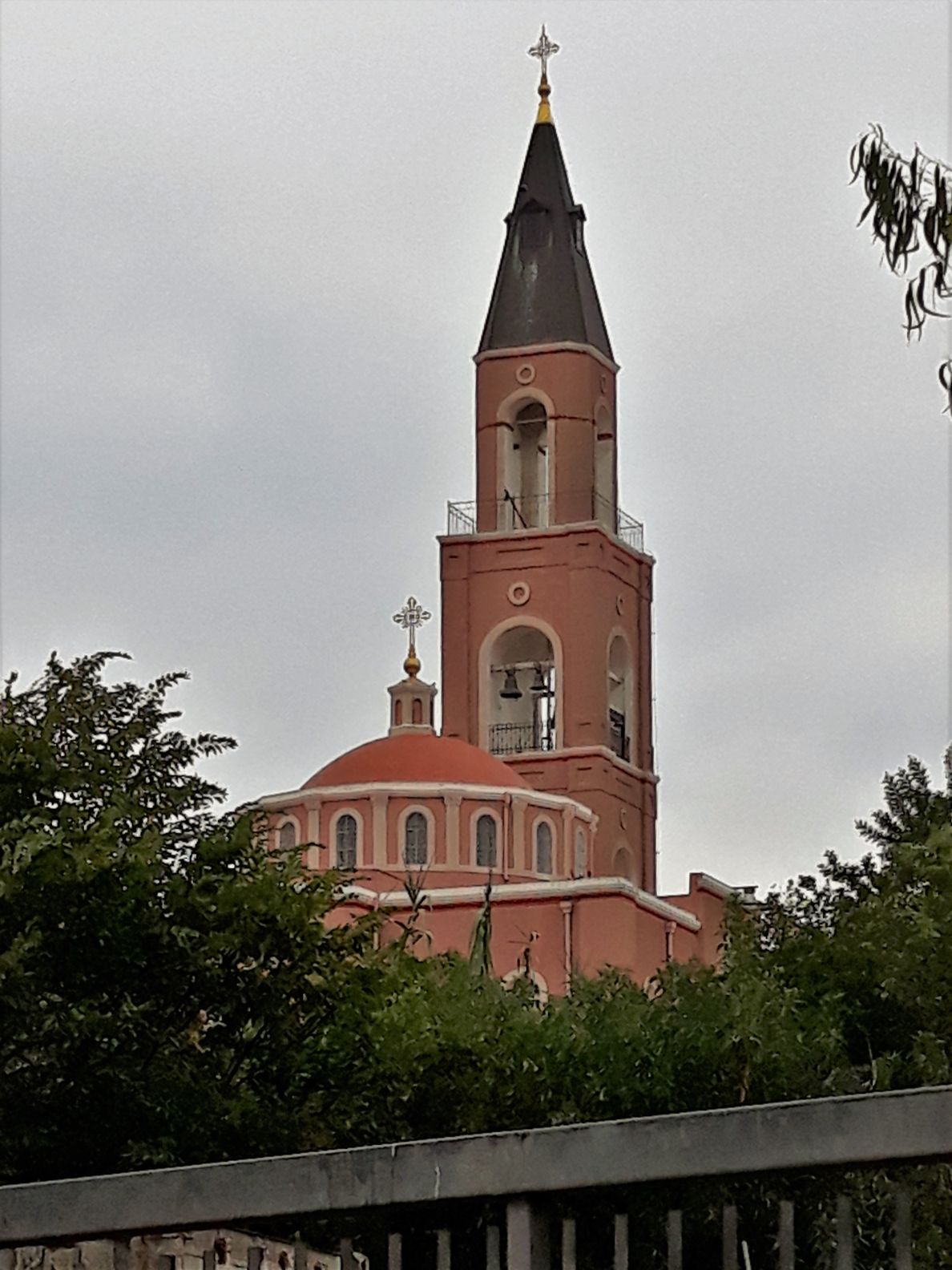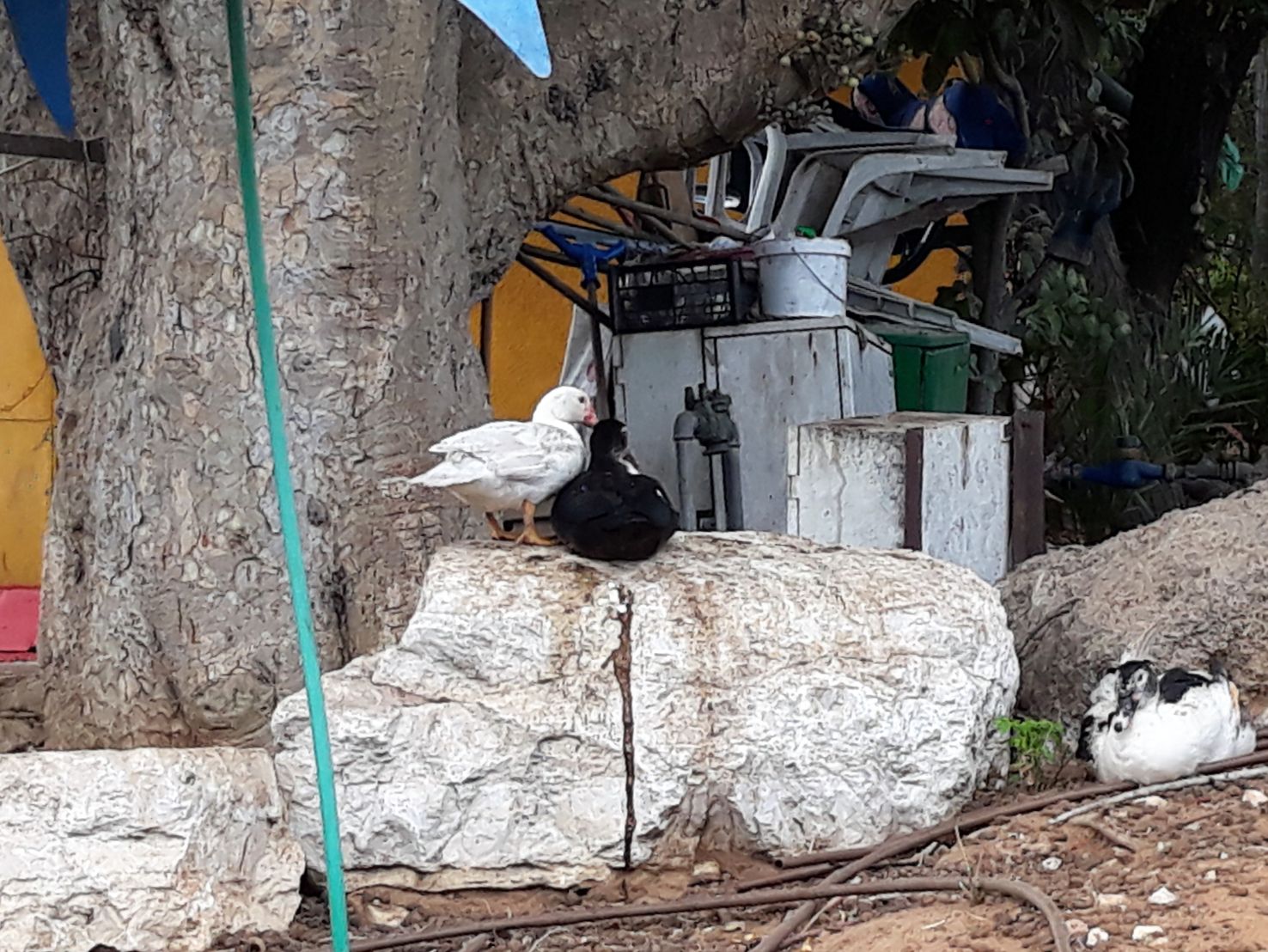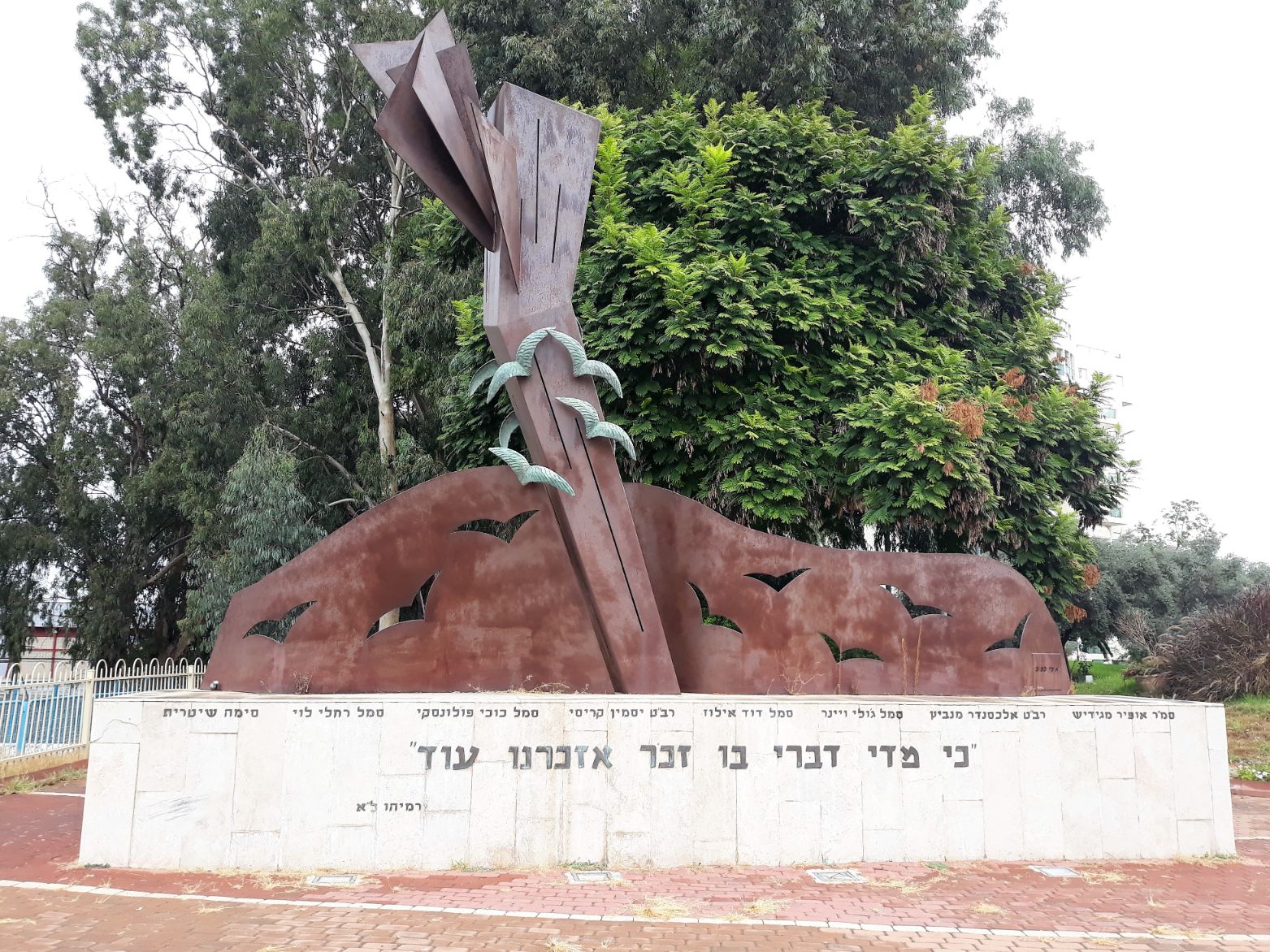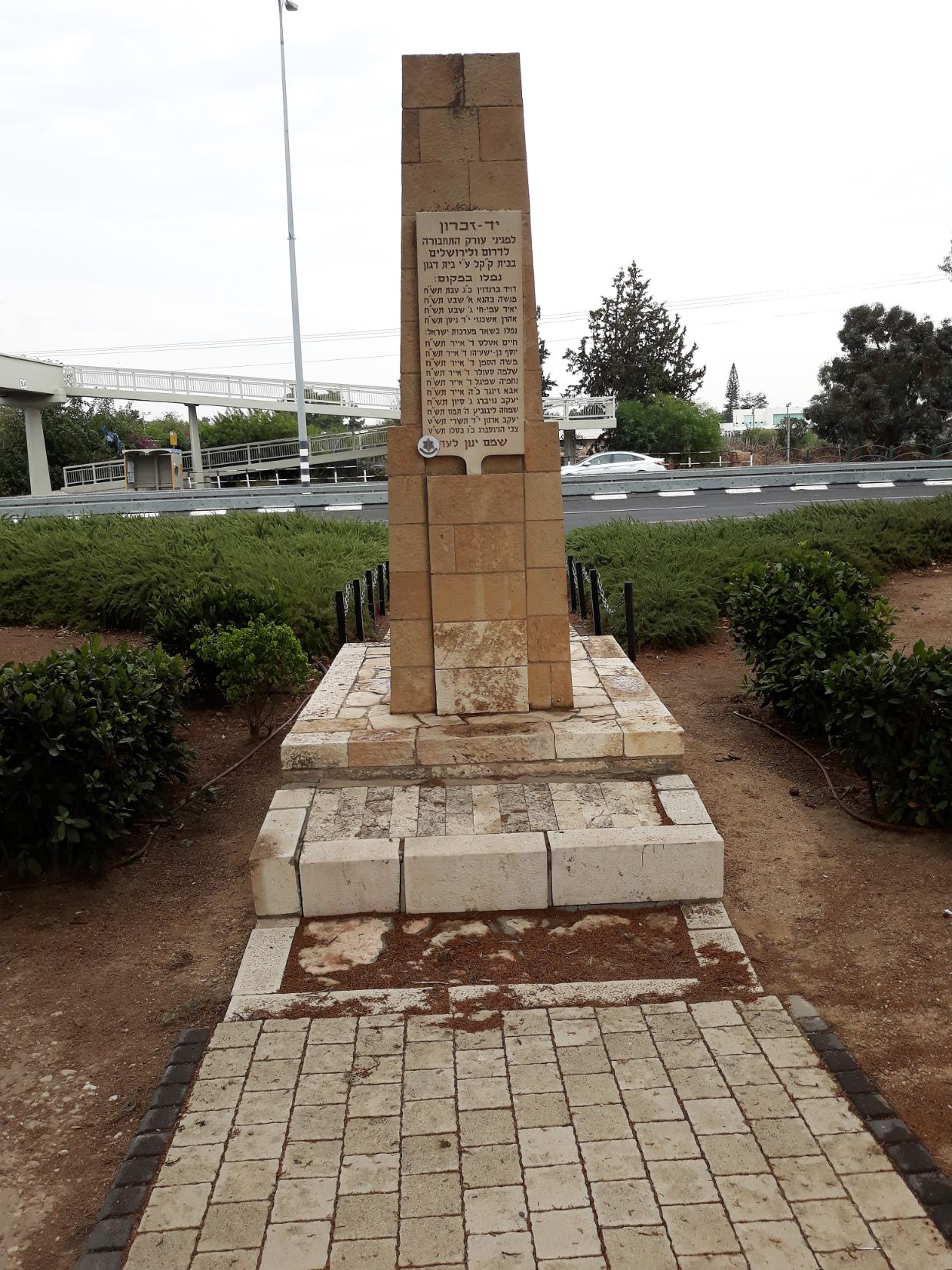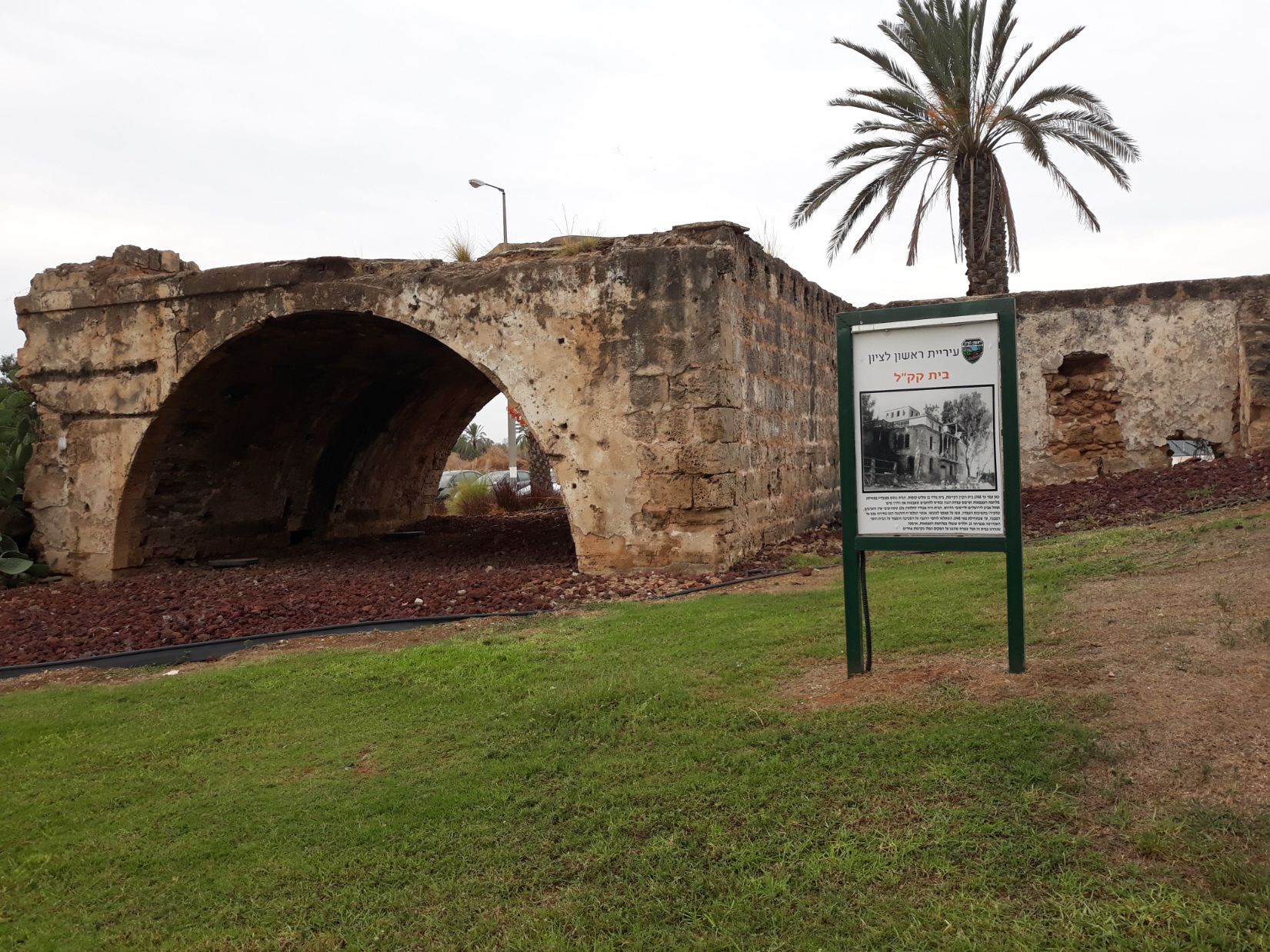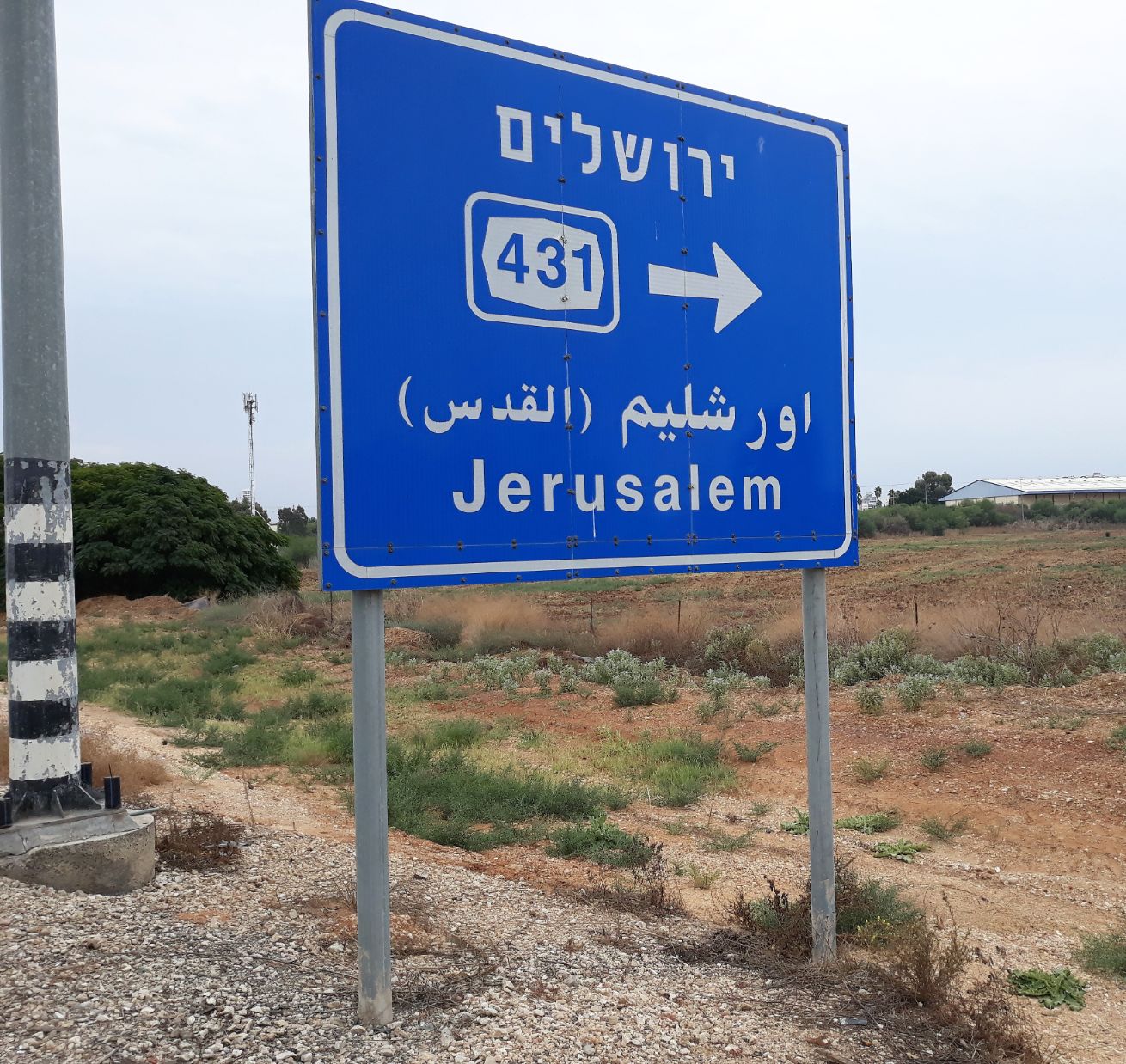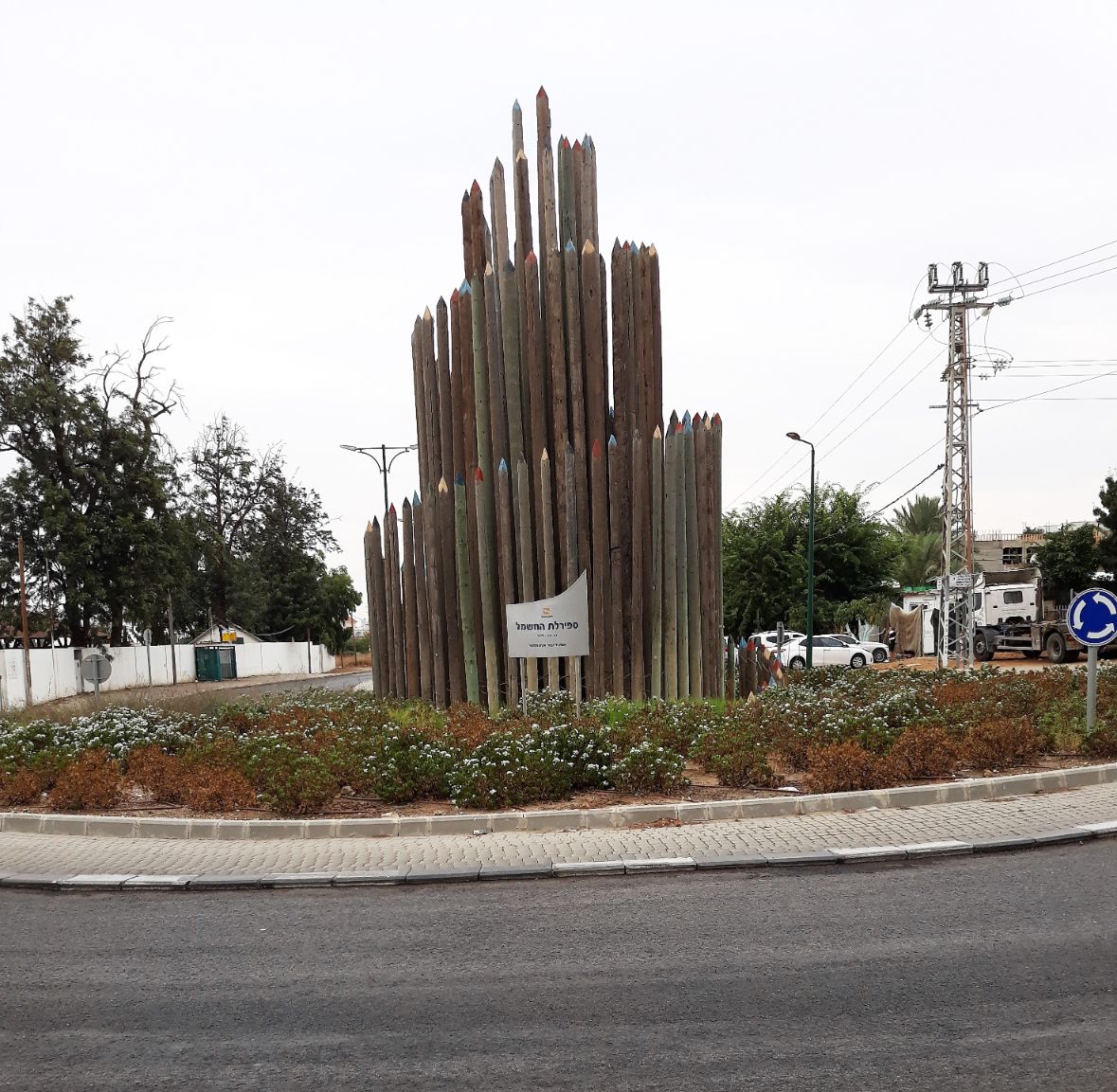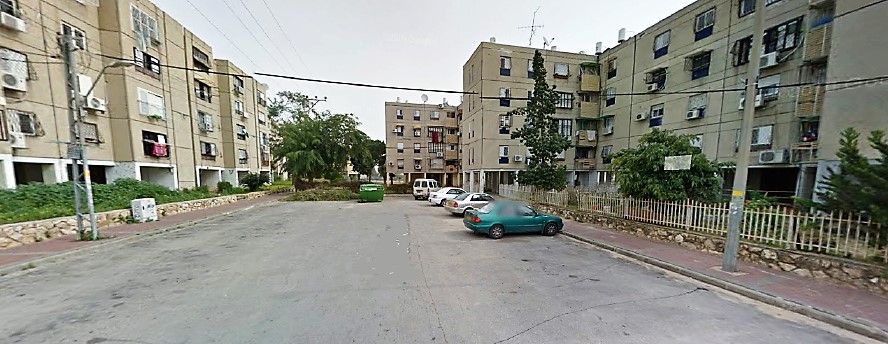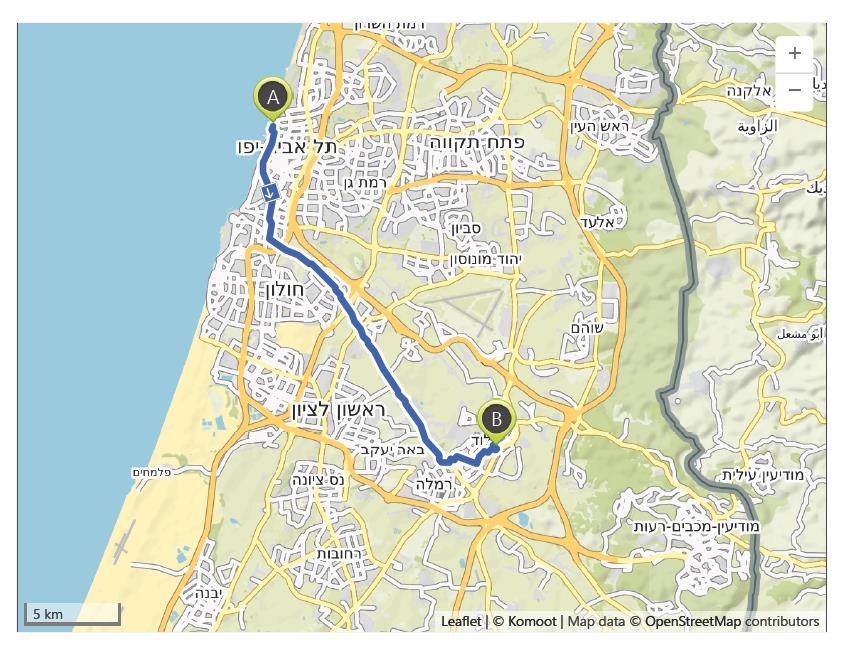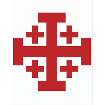Tel Aviv to Lod – 26th October
Distance: 26.5 km – Elevation +200 m -150 m
Weather: Showers at start then Sunny. Temperature: High 25 degrees
It was 8.00 am when I walked out of the guest house to be greeted by an unexpectedly overcast morning. Breakfast was not available at my accommodation and I was feeling decidedly hungry as I walked along HaYarkon Street with its line of palm trees in the central reservation. It was a Saturday morning, the Jewish Sabbath—Shabbat in Hebrew, Shabbos in Yiddish, and the city streets were almost empty as I stumbled by chance on an open restaurant for breakfast. The restaurant was Benedicts, one of a small chain of just two restaurants, renowned throughout Tel Aviv for its breakfast menus. I sat at an outside table on Ben Yehuda Street and for the third time in four days I enjoyed a full English breakfast.
Whilst eating I overheard a conversation between two people on an adjacent table talking about an approaching “Medicane” – not being a familiar word, I checked the weather forecast and I was alarmed to see warnings of a rare “Medicane”, a tropical storm, about to land in Israel with a forecast of heavy rain, high winds, and flash flooding. Several hiking trails had been closed. I was intending to take the Israel National Trail but quickly rerouted to keep me close to shelter if the storm materialised.
Soon after breakfast and as I continued on my revised route it started to drizzle with fine rain. Normally I would have just opened my umbrella but when doing so I found the main stem had broken which could only have happened during my flight from Larnaca to Tel Aviv. So I had to use my wet weather gear for the first time in 3 months!
Tel Aviv is noted for its street art and graffiti and there are guided tours to see it and I passed one such tour as my new route continued along Ben Yehuda Street and Allenby Street. Looking down as I walked I noted brass markers in the pavement, with “Independence Trail” engraved in both English and Hebrew. An unexpected discovery and a quick search on Google told me:
“The trail includes the first homes of Tel Aviv built on sand dunes, the mosaic of Jaffa’s history created by Nahum Gutman, the Herzliya Hebrew Gymnasium, the Great Synagogue, the Haganah Museum, the first branch of the Bank of Israel, the monument commemorating Tel Aviv’s founders, the statue of the city’s first mayor, Meir Dizengoff, and Independence Hall – which originally was Dizengoff’s home that he converted into the Tel Aviv Museum of Art. On May 14, 1948, it was also the site of the historic ceremony at which David Ben-Gurion Declared Israeli Independence – thereby coming full circle: four decades after the Hebrew City was founded, the Hebrew State was established in the very same place.” (https://www.tel-aviv.gov.il/en/Pages/IndependenceTrailen.aspx)
I passed by the Great Synagogue of Tel Aviv built in 1926 and renovated in 1970, I would have liked to have looked inside the Synagogue but it was being prepared for prayers and I did not feel comfortable entering on the Jewish Sabbath. Leaving Allenby Street the route continued along Ha’Aliya Street which brought me to the Botanical Gardens and Saint Peter and Saint Tabitha Russian Orthodox Church built in 1894 the site commemorates the raising of Tabitha from the dead by Peter, which took place in Jaffa.
Soon the rain stopped. Unfortunately, after leaving the city, the revised route was not greatly inspiring. Close to mid-morning I called into a filling station for coffee and a woman sitting at a table close by started talking to me about happiness – I wasn’t clear about her subject but she never stopping talking!
I continued on to Azor where there is a memorial for seven soldiers and one civilian killed in 2001 when a bus deliberately ran over the waiting people at the bus stop. Further along Highway 44 I came to the Beit KKL Memorial Monument-Rishon Lezion:
“Until 1948, the Keren Kayemet House stood here, a detached house with three floors. The house was abandoned by its employees at the beginning of the War of Independence and served as a defensive position and base for the fighters who secured the road from Jaffa.
And from Tel Aviv to Jerusalem and the southern localities. The house was completely isolated in the heart of hostile Arab territory and the Arabs, Recognizing the importance of the position, they made every effort to conquer it. The Palmach and Haganah members fiercely defended
The structure, until in early May 1948 the environmentalists took over and the siege of the house was lifted. The monument commemorates 14 martyrs who fell in the War of Independence, four who were killed in this house and ten others who defended the place and fell in other battles.”
Just before reaching Ramla I saw for the first time a directional sign to Jerusalem. Ramla’s importance came because it was located at the intersection of the ancient Roman Via Maris, connecting Cairo with Damascus, and the road connecting the Mediterranean port of Jaffa with Jerusalem.
“Ramla is the only city founded by the Arabs in Palestine. It was established in 716 by the caliph Sulaymān ibn ʿAbd al-Malik (reigned 715–717), who made it the administrative capital of Palestine, replacing nearby Lod (Lydda). He built marketplaces, fortifications, and, above all, the White Mosque (Al-Jāmiʿ al-Abyaḍ). Only ruins of these remain, but the minaret of the White Mosque, the so-called White Tower, 89 feet (27 m) tall, added by the Mamlūk sultan Baybars (reigned 1260–77), still stands. During the First Crusade (1096–99), the city was captured and fortified by the crusaders, who called it Rames. The fortifications were destroyed by Saladin when he took the city from the crusaders in 1187. From the 14th century on, Ramla developed as a trade centre; though an Arab city, it contained a Jewish community until the Arab-Jewish disturbances of 1936–39.” ( https://www.britannica.com/place/Ramla )
I had arranged to stay in Lod with a family via Airbnb and arrived just before the rain started again. When I arrived at the lodging I wasn’t sure what to expect. It was on the third floor of a grim block of flats. It was dark and the stone stairs had no lights. I knocked on the door and was greeted by an elderly lady with a lovely smile, Elena, she was Russian and she really looked after me and provided a meal of soup, salad, pastie, and fruit. It was a small lived-in flat and my room was small but comfortable and I slept well.
